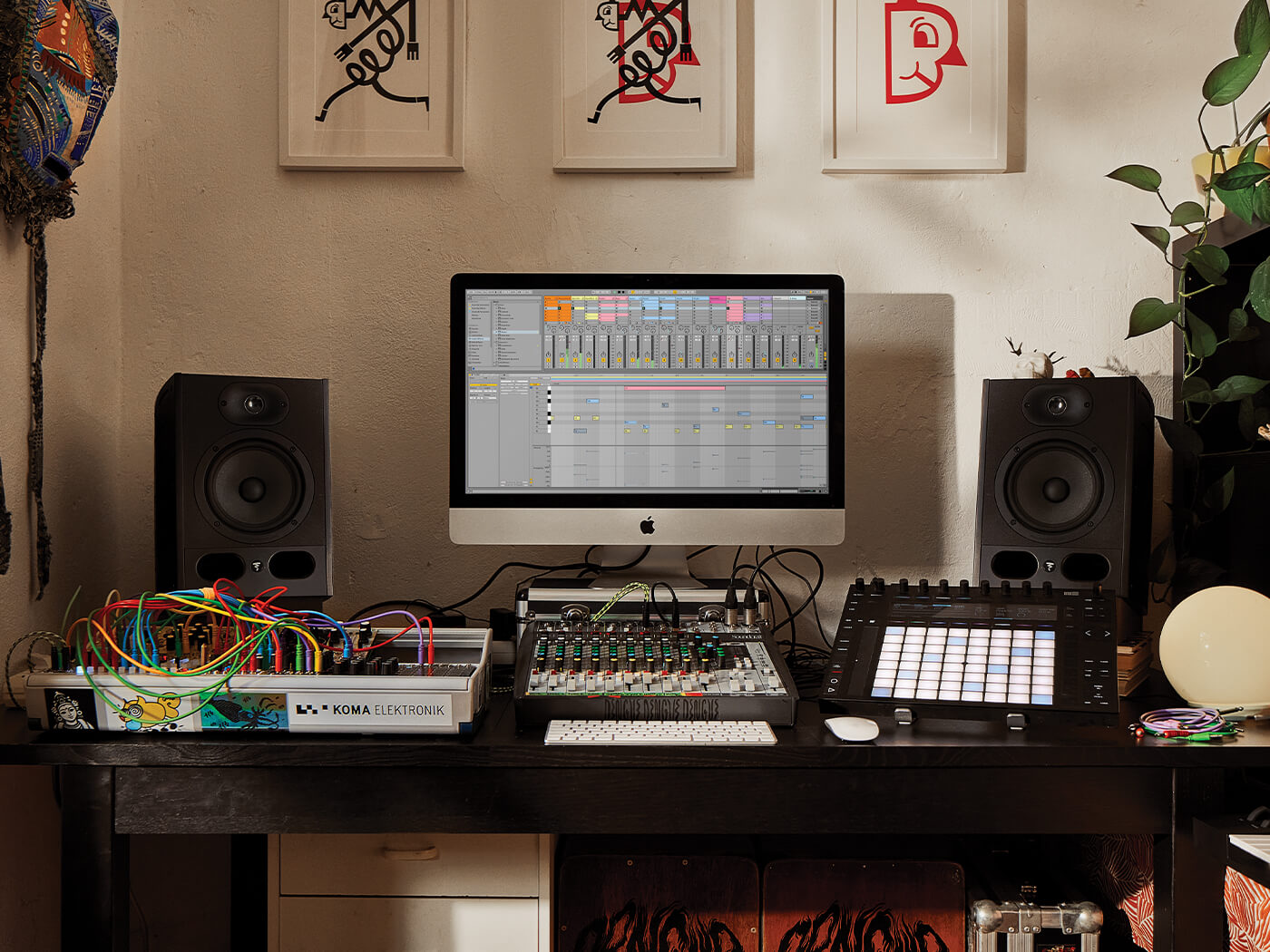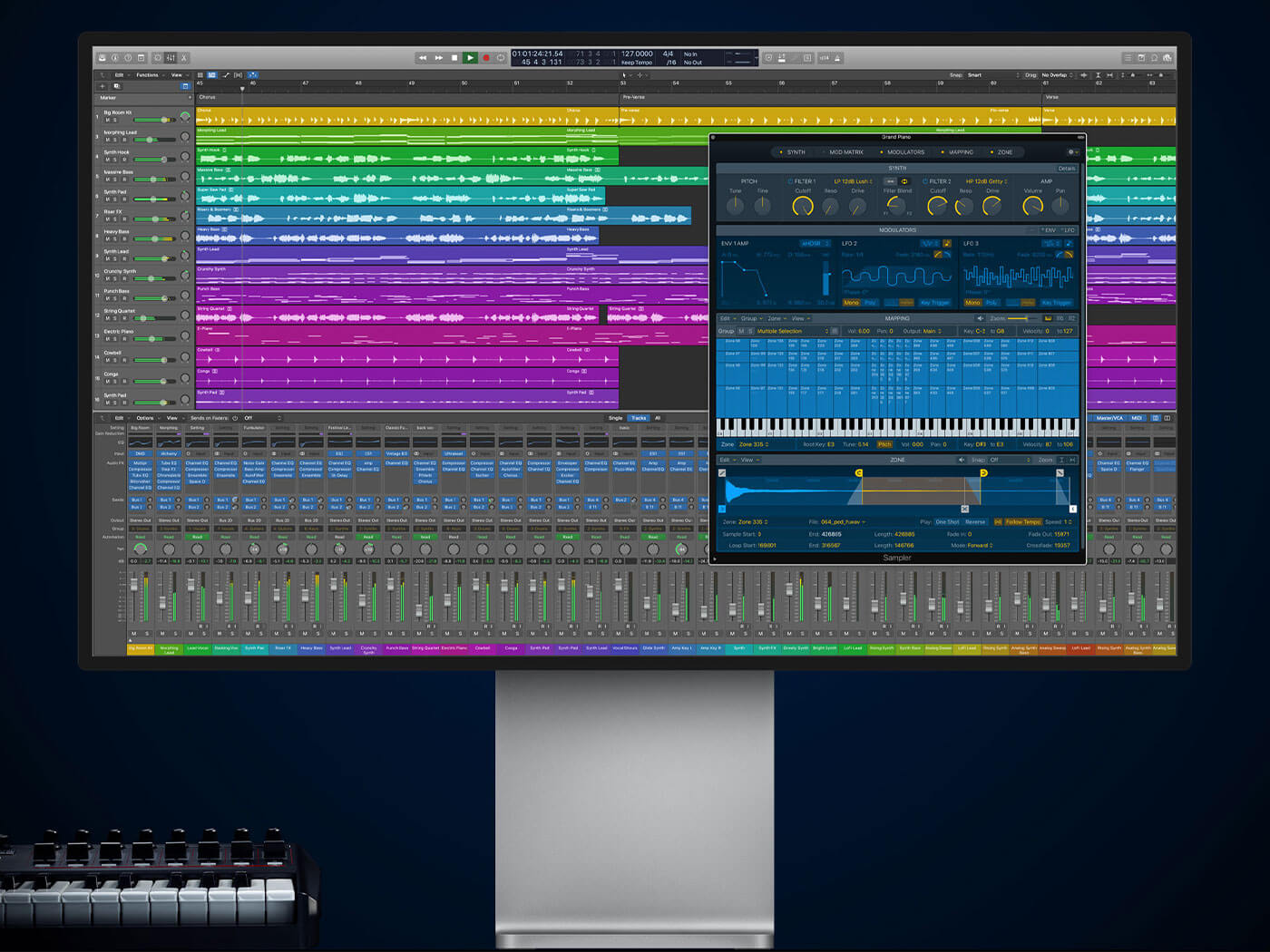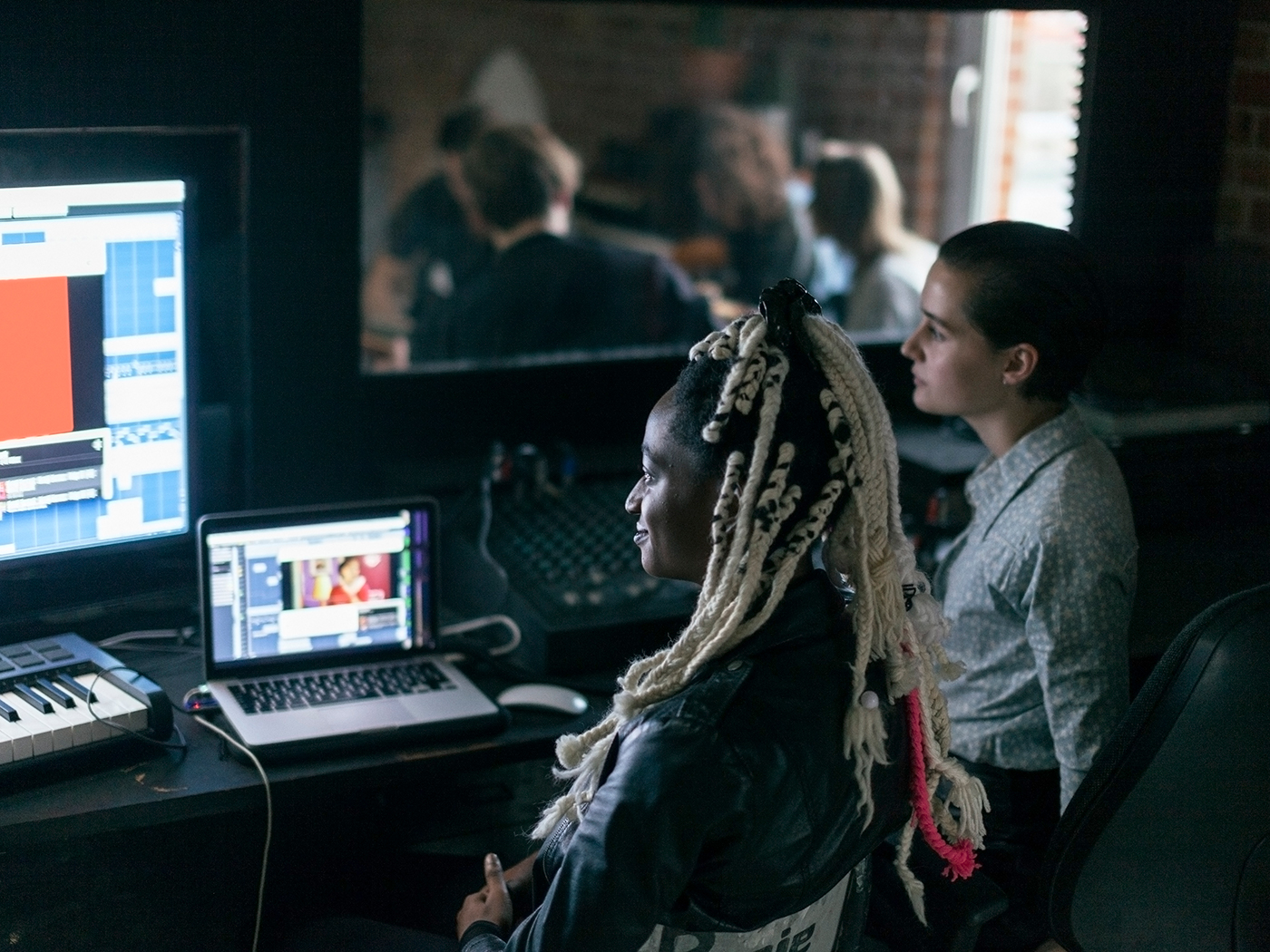Beginner’s Guide: Everything you need to know about remixing
Want to try your hand at remixing but not sure where to start? We’ve got you covered.

If you’ve never remixed a track before, it can be a daunting prospect. There are a lot of choices to make, and the considerations can be fairly different to when you’re making original music.
Don’t fret, though; we’ve got you covered with our comprehensive guide to delivering the best remix possible. We cover the practicalities and the creative process, with tips and tricks for tackling reworks along the way.
Is remixing legal?
Technically speaking, a remix is something that has been officially commissioned by the original artist or their label. You will receive the constituent parts of the original to work with, in this instance.
If you’re looking to create your own edit or bootleg of a track you like from the original track, be aware that you are not legally allowed to release the track through digital service providers, play it during a DJ gig, or play it via any other commercial means. It’s OK to make reworks for your personal use and, while some of the same techniques and processes that you’ll learn in this piece will still be relevant, your options will be a lot more limited.
You’ll need some creative solutions to work with the limitations of not having the original song’s elements in this scenario. Still, with a little imagination, clever editing and processing, you can work wonders.
What tools do I need for remixing?
You’ll need a DAW – such as Logic Pro or Ableton Live – to create your remix. Broadly speaking, what you’re doing is taking the stems (the individual channels or groups of parts) of the original and editing, manipulating and adding to them with your own sounds.
But don’t feel like you need to confine yourself to your DAW. You can use outboard gear, hardware, live instruments, apps, or even DJ controllers and effects units to add to your remix. Ultimately, you’ll be mixing the finished track down in your DAW as you would with an original track, but the world is your oyster in terms of what you add into the mix.

How to get stems from a track?
Whoever is asking you to do the remix should supply the stems – the different parts of the original – as 24-bit uncompressed (WAF or AIFF) files, at whatever sample rate their project is set to. The usual way people send stems is to bounce (export) each channel individually, but you may receive certain elements grouped together as bus bounces – such as drums, for example.
Make sure you ask for anything you haven’t received that you heard in the original, or if you want a certain element ‘dry’ – i.e. without reverb, delay or other effects. You may also want to ask for any melodies to be supplied as both MIDI and audio so that you can easily try different sounds out. Most DAWs have an Audio-to-MIDI converter if they are unable to supply the MIDI file, though.
Creative approaches to remixing
The ideal starting point for a solid remix is to hear what you want to do with the track by listening to the original. Don’t worry if this isn’t the case at this stage, though – you may just need to play around with the parts and experiment before figuring this out.
Either way, your key creative decisions to ask yourself are:
- What mood am I going for? Do I want to stick to or enhance the feel of the original or give it a totally different feeling?
- Who am I making this remix for? People listening at home, the radio or for people to dance to?
- Am I changing the genre? If so, what are the conventions for this genre? Do I need a mixable 16/32-bar intro, for example?
- Am I changing the tempo?
- Am I changing the key?
- If there’s a vocal, how much of it am I using? Am I sticking to the song structure or just using a few lines here and there?
- Do they want my ‘signature sound’ applied to this remix, or do I have free reign to do whatever I want with this?
The more clarity you have from these questions from the offset, the easier things should go. However, it’s also fine if you have to go the trial-and-error route.
The great thing about remixing is that there are creative limitations that you have to work within, so while you have plenty of options, you will be guided by the original material to some extent.

Setting your tempo and key
It’s best to import all of your parts into your DAW first so you can try out different combinations and see exactly what’s going on in each track stem.
First, you need to decide what tempo you’d like your remix to be. Unless you’re sticking to the tempo of the original, you’ll want to time-stretch your audio to suit your project tempo.
Here’s how to time-stretch your imported audio files in Ableton Live and Logic Pro:
It’s also good to have the original track imported – without any time-stretching – to reference from time to time (or maybe to even resample portions of).
Once you have all your stems imported and time-stretched, go through each one and decide which parts you want to use. It might just be the vocal, or it may be several different parts. Try muting and soloing different combinations and sections of the track to see which blends inspire you. If there are parts you are sure you don’t want to use, you can delete them – or you could mute/hide them just in case you need them later.
Once you’ve made some broad decisions of what to use, it’s a good idea to rename your stems and channels, and apply any colour coding to regions or clips that help you see what’s going on in your arrangement view. You can also start bussing up different groups of sounds if you work in this way.
You may also want to change the key of the original for your remix. You can use metering tools like Logic Pro’s Tuner to detect the key, but often a more intuitive and helpful way is to bring up an instrument like a piano and play the notes yourself until you find the key and notes that fit with it.

Remix techniques
If you’ve gone through the checklist in the previous ‘creative approaches’ section, you’ll hopefully have a solid idea of what you want to try for your remix. If you’re looking for more specific strategies, though, you could try one of the following:
- Re-producing: If you’re remixing a song with vocals, you could put yourself in the shoes of the original producer and imagine how you would have produced the song in the first place
- Reharmonising: Again, if you’re using a vocal, you could try different chords to fit the original key. This can have a dramatically different effect on the mood of a song.
- Editing: you could take the approach of a traditional edit, which is a way of reworking a song using only its constituent parts without any additions. You could stick to using only the original stems but chopping and looping and rearranging it as you see fit, and using plug-in processing and EQ-ing to alter the flavour of the parts.
- Sampling: if you’re not into the extended parts of the original, you could look at sampling or resampling small pieces of individual elements of the track. Early 90s house remixes often took this approach, capturing short vocal hits or stabs and chopping them up and replaying them in syncopated, rhythmic fashion. Or you could sample a melodic part from the original and play a melody with it across the keyboard. You could even pull apart a drum loop into its individual hits if they are available to you and make new rhythms and loops using these parts as a drum kit.
Stem separation
Thanks to the ingenuity of AI and machine learning, there’s now many pieces of software that allow you to separate stems from any stereo track. Even better, most apps are free and affordable. Free DJing software such as VirtualDJ and Algoriddim’s djay give you real-time access to multiple stems from a piece of music. This means that, while you’re DJing, you can isolate vocals from one track and remove the beat from another. The possibilities here are incredibly exciting – if you had four decks running at once, you could mash up the drums, bass, instrumentation and vocals from each track to create a completely new piece of music. The software also enables you to export stems directly to a USB to load them into a DAW.
You can also use more comprehensive software such as Hit’n’Mix’s RipX DeepRemix and DeepAudio. You’ll need to pay for a license for these, but you’ll get much clearer results and the option to edit the stems before you export them. Elsewhere, free browser-based tools such as Lalal.ai are useful for quick experimentation but don’t provide optimum results.
Mixing and mastering your remix
When it comes to your mixdown, pay careful attention to how the different elements in the original (hopefully!) complemented each other and sat together in the mix. Be aware of what you have added and what you have taken away in terms of the frequency range, and make sure that you spend time listening to your mixdown across different devices like your monitors, headphones, a Bluetooth speaker and your phone. Are all the elements cutting through on each device? Obviously, the lowest reaches of the bass are not going to cut through on smaller speakers, but you should be able to hear some semblance of the bass in the mix across your devices.
The label or artist who has commissioned your remix should pay for a professional mastering engineer to master your remix. You’ll need to supply them with a pre-master (your final mix) with between 4 and 6db of headroom on the master channel volume for the mastering engineer to work with. They will tell you what bit depth and resolution to export your pre-master at, but 24-bit, 44.1khz is generally what’s requested.

Should I get paid for my remix?
The short version of this answer is yes.
Doing a remix for someone is just like any other kind of work and deserves remuneration. A label or original artist usually pays the remixing artist a one-time fee to buy the rights to their work from them. If they are unable to pay you a fee, you should insist on a percentage of the mechanical – and ideally publishing – royalties for your remix as payment. You may also be asked to do a remix swap with someone, where you both provide a remix of each other’s work, and you both keep all the respective royalties on the other person’s remix of their own track.
It is very poor practice for a label or artist to ask someone to do a remix for free with no fee or royalties because it will get them exposure. All artists deserve to be rewarded for their work, and if they aren’t willing to compensate you somehow, you should seriously consider whether they are worth working with.
Whatever you do, it’s sensible to insist on a contract that outlines your agreement.
Are remixing competitions worth doing?
Any remix competition worth its salt will have a lot of entrants, and it will be very hard to cut through the pile, but at the very least, they are a useful way to practice your craft and have some experience playing around with parts. So, particularly early on in your career, they could be worth a bit of effort.
Try not to get stressed out with remixing, as it’s one of the most enjoyable things you can do as a producer. Don’t be afraid to rip it up and start again or try two different approaches in tandem. It’s also not uncommon for a remixer to provide two different remixes if they had two ideas they liked, so if you’re happy to and they’re both working, you could see if the label or artist is up for releasing both.
Good luck!